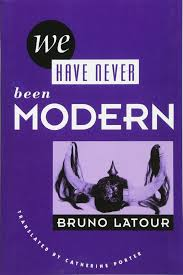WHAT CAN A CONFERENCE TALK DO?
August 10, 2019
by Yesmar Oyarzun
It is October 1994. The Rolling Stones might already be playing at the Superdome when Bruno Latour arrives at the 1994 installment of the Society for Social Studies of Science’s annual meeting only to find that his hotel arrangements have fallen through. And he is not the only person to experience woes with the arrangements at the since-closed Clarion Hotel. Fortunately, long-time 4S secretary Wes Shrum lets Latour crash in his room.
For Latour, this is perhaps the first 4S conference he attends since the release (at least of the English translation) of his now-canonical text We Have Never Been Modern, a short, but bold analysis and critique of the modern and the nature-culture divide. Latour, already a prolific STS scholar , may or may not be sitting in the crowd when Donna Haraway made what some in attendance have described to me as the talk that truly pushed her to prominence as one of the preeminent STS scholars of our time.

The talk Haraway gave that day is one that changed lives, one that people remember, and one that survives in citations. Unfortunately, a copy of the text has been lost to history. What is certain and remembered, though, is that Haraway’s paper entitled Never modern, never been, never ever: Some thoughts about Never-Never Land in science studies was a thoughtful and fierce feminist critique of Latour’s We Have Never Been Modern. Notably, the critique had to do with how feminist literatures had already been produced that would easily be evidence against claims made in Latour’s critique. One attendee remembers the lecture as the star performance of that year’s conference.
In recognition and celebration of this event, its upcoming 25th anniversary, and 4S’s return to New Orleans this year, the Flashbacks team will be sitting down for a short interview with Donna Haraway. Unfortunately, Dr. Haraway won’t be in attendance for this year’s conference, but those interested can see what she has to say about that conference and where we’ve gone since then by visiting the Flashbacks blog on or after August 26th.

The 1994 conference will be remembered as a moment when STS, and 4S in particular, came into its own. It was a strong year for the exchange of ideas, having been co-hosted (for perhaps the last time, but that’s a more complicated story) with the History of Science Society and the Philosophy of Science Association. That year, 4Sers showed up. Even more, women– feminists– showed up and made an impact. What will graduate students have to say about the 2019 conference in 2044? That’s up to you.

